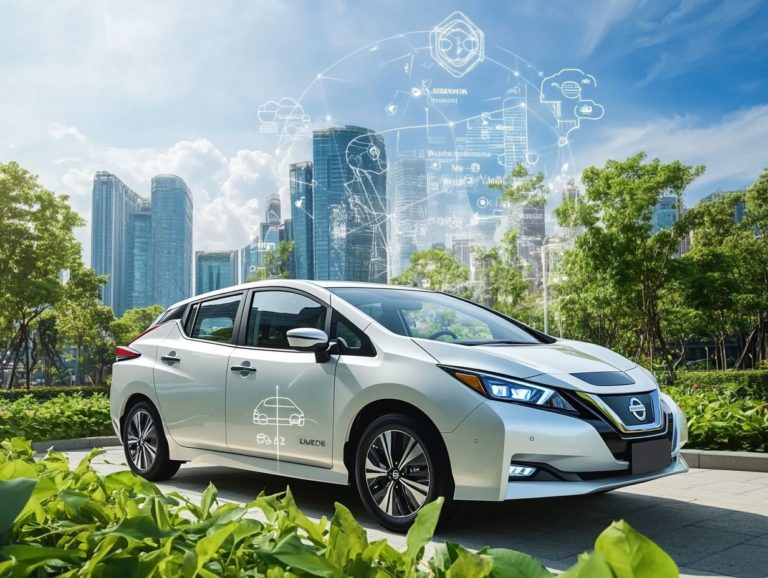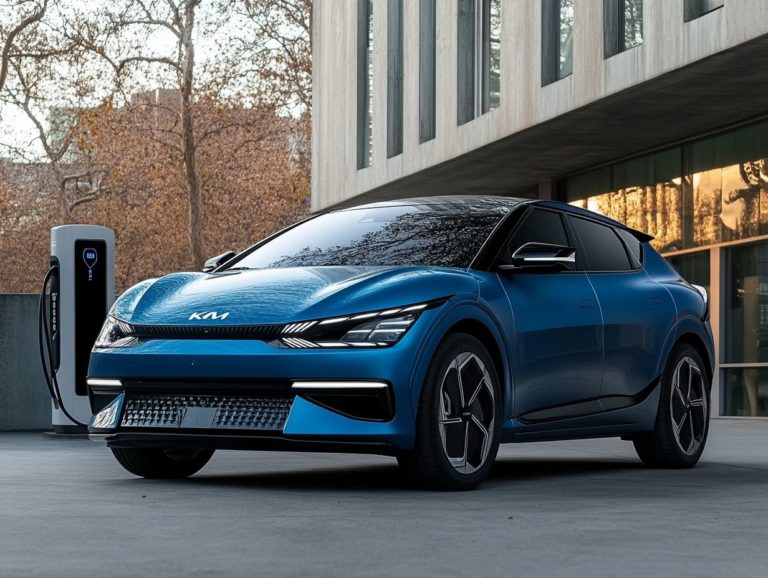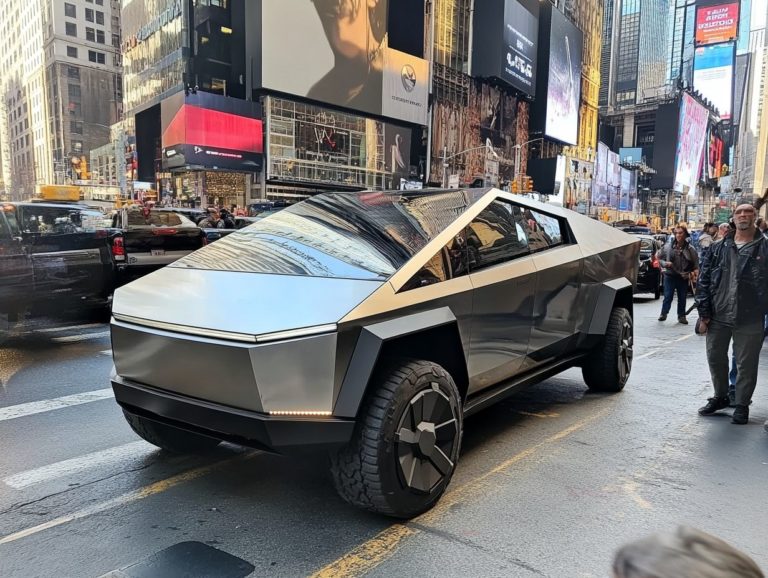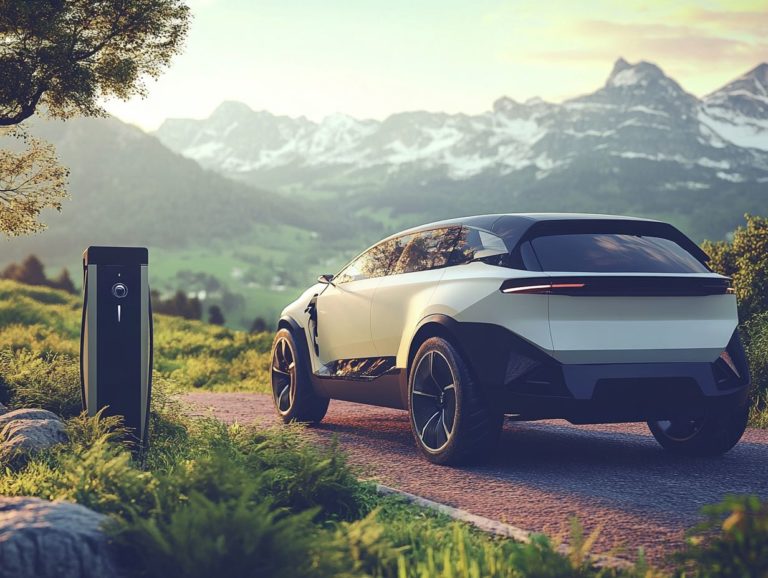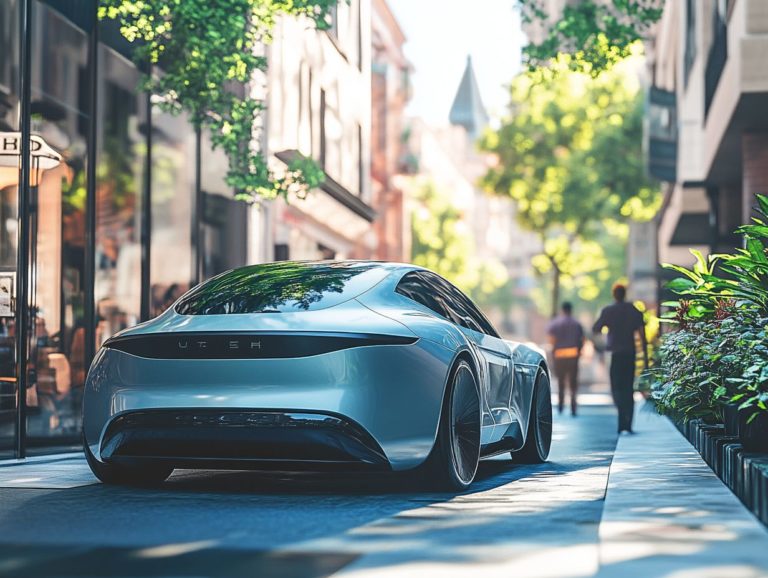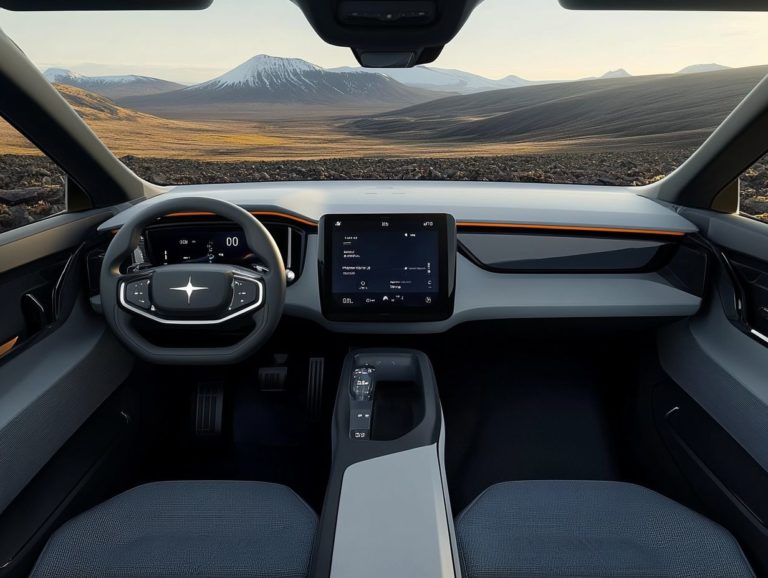5 Key Innovations in Electric Vehicle Technology
The electric vehicle (EV) landscape is evolving at a breathtaking pace, fueled by innovations that are set to transform your perspective on transportation.
With breakthroughs in battery technology and fresh design philosophies, the future of EVs transcends mere eco-friendliness; it’s about redefining efficiency, safety, and accessibility for everyone.
This article delves into the pivotal innovations shaping the industry, such as rapid charging solutions, lightweight materials, and even the rise of electric airplanes.
Embark on this journey with us as we unveil the advancements steering us toward a more sustainable and sophisticated automotive future.
Contents
- Key Takeaways:
- 2. Advancements in Battery Technology
- 3. Increased Range and Charging Speeds
- 4. Integration of Artificial Intelligence
- 5. Development of Wireless Charging
- 6. Use of Lightweight Materials
- 7. Implementation of Smart Grid Technology
- 8. Adoption of Electric Vehicle Infrastructure
- 9. Improvements in Motor and Powertrain Efficiency
- 10. Integration of Renewable Energy Sources
- 11. Enhanced Safety Features
- 13. Development of Electric Airplanes
- 14. Impact on the Environment and Sustainability
- 15. Future of Electric Vehicle Technology
- Frequently Asked Questions
- Curious about the 5 key innovations in electric vehicle technology?
- Curious about how battery technology has improved in electric vehicles?
- Curious about the significance of charging infrastructure for electric vehicles?
- Curious about regenerative braking in electric vehicles?
- Curious about how lightweight materials benefit electric vehicles?
- Curious about the role of autonomous driving in the future of electric vehicles?
Key Takeaways:
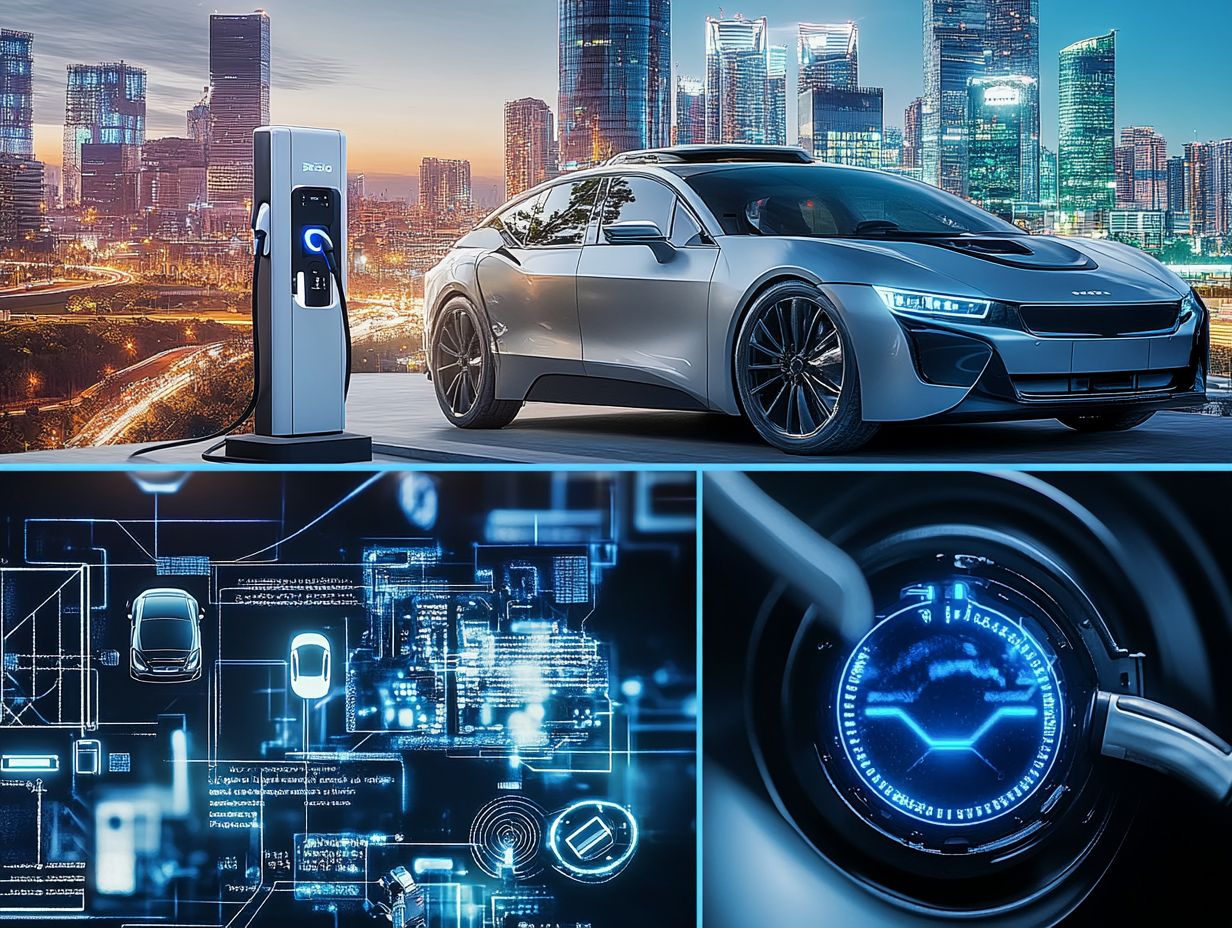
- Advancements in battery technology have led to increased range and faster charging speeds, making electric vehicles more practical and convenient for everyday use.
- The integration of artificial intelligence and lightweight materials has improved the efficiency and performance of electric vehicles, making them a more viable alternative to traditional gasoline-powered cars.
- The development of wireless charging, smart grid technology, and renewable energy sources has made electric vehicles more sustainable and environmentally friendly, reducing their impact on the environment and promoting a cleaner future.
2. Advancements in Battery Technology
Recent advancements in battery technology, particularly the emergence of lithium-sulfur batteries, are reshaping the electric vehicle landscape. You can expect to see better energy efficiency and an extended driving range while tackling issues with charging stations.
As researchers dig deeper into this groundbreaking technology, it’s becoming increasingly apparent that lithium-sulfur batteries have the potential to outshine traditional lithium-ion counterparts. They offer higher capacity and lighter weight, paving the way for longer journeys on a single charge.
When combined with other innovative battery types, like solid-state and fast-charging variants, electric vehicles are evolving at an impressive pace to meet your growing demands. The speed of this transformation heavily relies on a robust charging network. An expanded system of fast and convenient charging stations will ease your range anxiety and foster broader adoption, propelling the EV market further into the mainstream.
3. Increased Range and Charging Speeds
The electric vehicle sector is experiencing remarkable advancements in both driving range and charging speeds, transforming EVs into a more practical choice for your daily life and attracting a wider audience, despite facing 5 major challenges for electric vehicle manufacturers.
As battery chemistry progresses, newer models now allow you to travel longer distances on a single charge while significantly cutting down the time you spend plugged in. The emergence of high-speed charging stations means you can recharge in minutes instead of hours, making electric vehicles even more convenient for daily commutes and spontaneous road trips.
These innovations ease range anxiety and build your confidence in embracing electric mobility. To further enhance your understanding, discover 5 things you didn’t know about electric cars. This shift encourages you to view EVs as a viable and sustainable alternative to traditional gasoline-powered vehicles.
4. Integration of Artificial Intelligence
The integration of artificial intelligence (AI) in electric vehicles is transforming the automotive landscape, allowing you to experience features like autonomous driving vehicles that can drive themselves without human intervention advanced sensors, and real-time monitoring that enhance both safety and driving comfort.
This technology is crucial for developing autonomous vehicles, which utilize AI algorithms to navigate complex environments, interpret external conditions, and make split-second decisions, all while significantly improving road safety. Imagine having predictive maintenance systems powered by AI that analyze vehicle data to foresee mechanical issues before they escalate, reducing your downtime and repair costs.
These innovations optimize energy efficiency and promote environmental sustainability by minimizing emissions and improving battery management. Ultimately, this paves the way for a greener future in transportation, as highlighted in 5 reasons why EVs are the future of transportation, making your driving experience not only smarter but also more responsible.
Don’t miss out on these exciting advancements in 5 ways electric vehicles are changing communities! Explore more and share your thoughts with us.
5. Development of Wireless Charging
The development of w wireless charging technology for electric vehicles, utilizing a method that uses magnetic fields to charge, marks a remarkable advancement in innovative design and charging infrastructure. It enhances user convenience while promoting eco-friendly practices.
By eliminating the need for physical connections, this groundbreaking approach simplifies the recharging process. You can simply park over a charging pad, free from the hassle of plugging in cables. This method cleverly uses magnetic fields to make charging easy and hassle-free!
In contrast to traditional charging methods, which often present challenges like cable management and weather-related issues, wireless charging offers greater reliability and ease. As this technology evolves, it has the potential to enhance the appeal of electric vehicles, transforming them into increasingly attractive options for consumers and contributing to a more sustainable future.
6. Use of Lightweight Materials
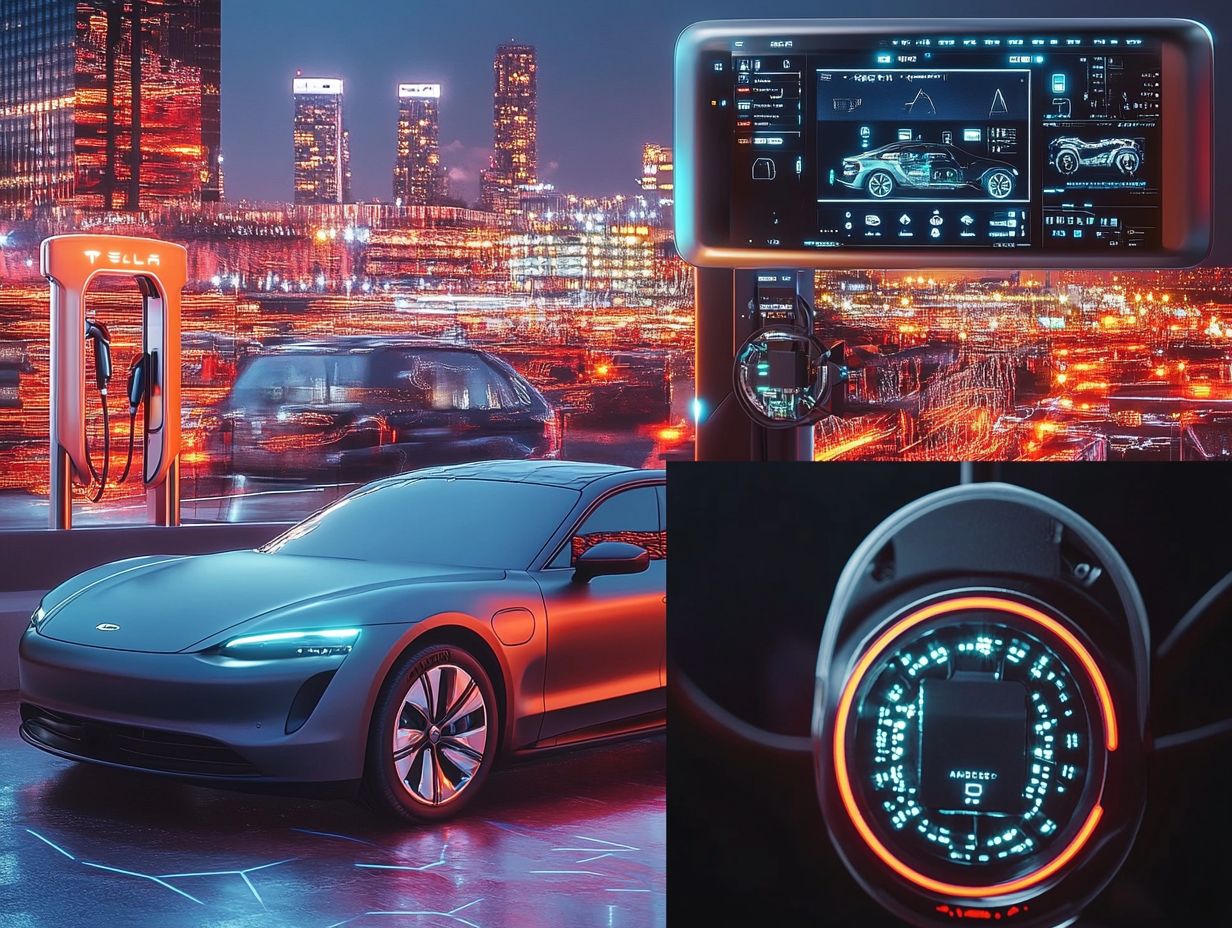
The use of lightweight materials in electric vehicles is essential for boosting energy efficiency and creating compact systems that elevate both performance and driving range.
Take carbon fiber, for example. It’s celebrated for its remarkable strength-to-weight ratio, meaning it s very strong compared to its weight, enabling manufacturers to build sturdy vehicle structures without unnecessary heft. Aluminum, on the other hand, is a great choice because it balances cost and durability, making it popular for many components.
These materials do more than just reduce the overall weight of the vehicle; they also contribute to lower energy consumption. This aligns perfectly with the growing focus of car makers on being environmentally friendly. By reducing reliance on heavier metals, manufacturers can decrease emissions during production and enhance recyclability at the end of a vehicle’s life cycle, marking a significant stride toward a greener future.
7. Implementation of Smart Grid Technology
The implementation of smart grid technology is crucial for optimizing energy conversion and enabling vehicle-to-grid systems, allowing you to seamlessly integrate renewable energy sources into the electric vehicle ecosystem.
This technology works through a sophisticated network of sensors and advanced communication systems, enabling real-time data exchange between utilities and electric vehicles. As it encourages bidirectional energy flow, your electric vehicle can draw power for charging and return excess energy back to the grid, enhancing overall energy efficiency.
This mutual benefit not only alleviates the burden on traditional energy sources but also champions the use of renewable energy, ultimately paving the way for a more sustainable future. By harnessing cutting-edge smart grid capabilities, you contribute to creating a more resilient and responsive energy management system, reaping benefits for both yourself and the environment.
8. Adoption of Electric Vehicle Infrastructure
The successful adoption of electric vehicle infrastructure is essential to boost electric vehicle usage and ensure that eco-friendly vehicles are both accessible and convenient, ultimately expanding the electric vehicle market.
Currently, you might notice that charging stations are unevenly distributed, with urban areas enjoying a higher concentration compared to rural ones. This can create challenges for potential users living outside metropolitan zones, making it harder for them to transition to electric vehicles.
Governments are working hard. They are teaming up with businesses to build more charging stations. These collaborations not only enhance the availability of charging points but also spark innovation in charging technologies.
As more charging stations appear, it will make it easier for you to drive electric, alleviating range anxiety and encouraging you and others to consider electric vehicles as a viable option for your transportation needs.
9. Improvements in Motor and Powertrain Efficiency
Recent advancements in motor control and powertrain efficiency are dramatically improving the energy performance of electric vehicles. These advancements are driven by the integration of power semiconductors like silicon carbide and gallium nitride.
These innovations also minimize energy losses during operation. They enable quicker response times and more precise control, resulting in vehicles that are not just more efficient but also highly responsive to your driving inputs.
As manufacturers embrace these advanced devices, they tap into the potential for smaller and lighter designs. This contributes significantly to overall weight reduction.
This synergy between advanced motor control systems and cutting-edge materials is paving the way for the next generation of electric vehicles. It showcases enhanced range and performance on the road.
10. Integration of Renewable Energy Sources
The integration of renewable energy sources into the electric vehicle ecosystem is essential for achieving sustainable transportation goals. It maximizes energy conversion efficiency.
Imagine charging your electric vehicle with clean energy from solar panels and wind turbines. This not only supports a sustainable future but also reduces your reliance on fossil fuels.
Whether you harness sunlight on your residential rooftop or support wind farms in your community, every effort contributes to a greener future. This synergy enhances the electric vehicle infrastructure, making charging stations more environmentally friendly.
As these renewable sources become more widespread, they play a vital role in lowering greenhouse gas emissions. They foster a more resilient energy landscape and set new standards for sustainable practices.
11. Enhanced Safety Features
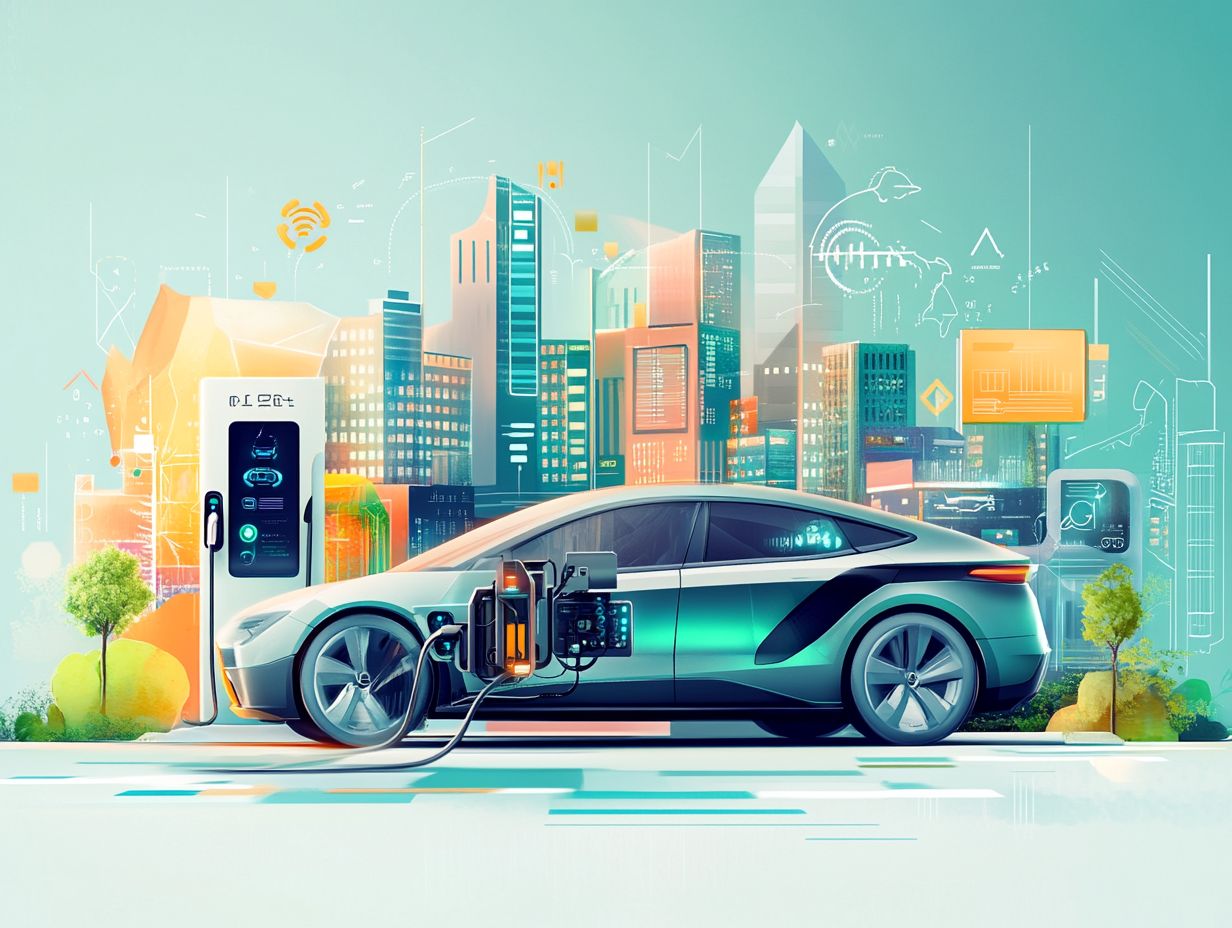
Enhanced safety features in electric vehicles, including advanced sensors and technologies found in autonomous vehicles, are essential for ensuring intelligent mobility. They safeguard both drivers and pedestrians.
The integration of automatic braking systems, capable of detecting imminent collisions and initiating braking without any input from you, significantly diminishes the risk of accidents. Collision avoidance technologies harness extensive data analysis from multiple sensors to anticipate potential hazards.
These innovations not only boost safety and reliability but also build your confidence in electric vehicles. For those interested, here are 5 reasons to consider an electric vehicle. As more manufacturers adopt these cutting-edge systems, your overall driving experience becomes safer, contributing to a more secure road environment for everyone involved.
13. Development of Electric Airplanes
The development of electric airplanes marks a significant leap forward in the aviation industry. This offers sustainable transportation solutions that resonate with innovations emerging in the electric vehicle sector.
As this technology progresses, you’ll encounter exciting projects making waves. From battery-powered regional aircraft to hybrid-electric systems specifically designed to cut emissions and reduce noise, these initiatives strive to lessen the carbon footprint of air travel.
They also emphasize energy efficiency, aligning seamlessly with advancements in electric vehicles that champion renewable energy sources. The integration of lightweight materials and advanced aerodynamics, combined with state-of-the-art battery technology, is paving the way for quieter, faster, and more eco-friendly flying experiences.
This evolution is set to transform air travel into a more sustainable mode of transportation. It enhances your journey while caring for the planet.
14. Impact on the Environment and Sustainability
The impact of electric vehicles on environmental sustainability is transformative. They offer eco-friendly options that significantly reduce pollution and create a greener future.
These vehicles are essential in minimizing harmful emissions, especially carbon dioxide, which contributes majorly to global warming. By shifting to electric options, you ll soon enjoy noticeable improvements in air quality. This leads to healthier living conditions and fewer respiratory issues for you and your community.
Embracing electric vehicles is crucial in the fight against climate change. It promotes renewable energy and reduces reliance on fossil fuels. As more individuals join this movement, a more sustainable transportation network will emerge, prioritizing the health of our planet.
15. Future of Electric Vehicle Technology
The future of electric vehicle technology is undeniably bright. Ongoing innovations, along with emerging trends in electric vehicle technology, are set to redefine the automotive industry and champion sustainable transportation practices for generations to come.
As advancements in battery technology continue, you ll soon enjoy longer-range vehicles and faster charging times. These improvements will enhance your convenience and address any lingering concerns about making the switch.
Improvements in charging infrastructure are on the way, making it easier for you to find accessible charging stations. This encourages more individuals like yourself to embrace electric vehicles in their daily routines.
The integration of autonomous vehicle capabilities will change how you perceive transportation. This innovation paves the way for smarter, safer, and more efficient travel experiences that meet the demands of modern urban living.
Watch this video to explore how electric vehicles are changing our transportation landscape.
Frequently Asked Questions
Curious about the 5 key innovations in electric vehicle technology?
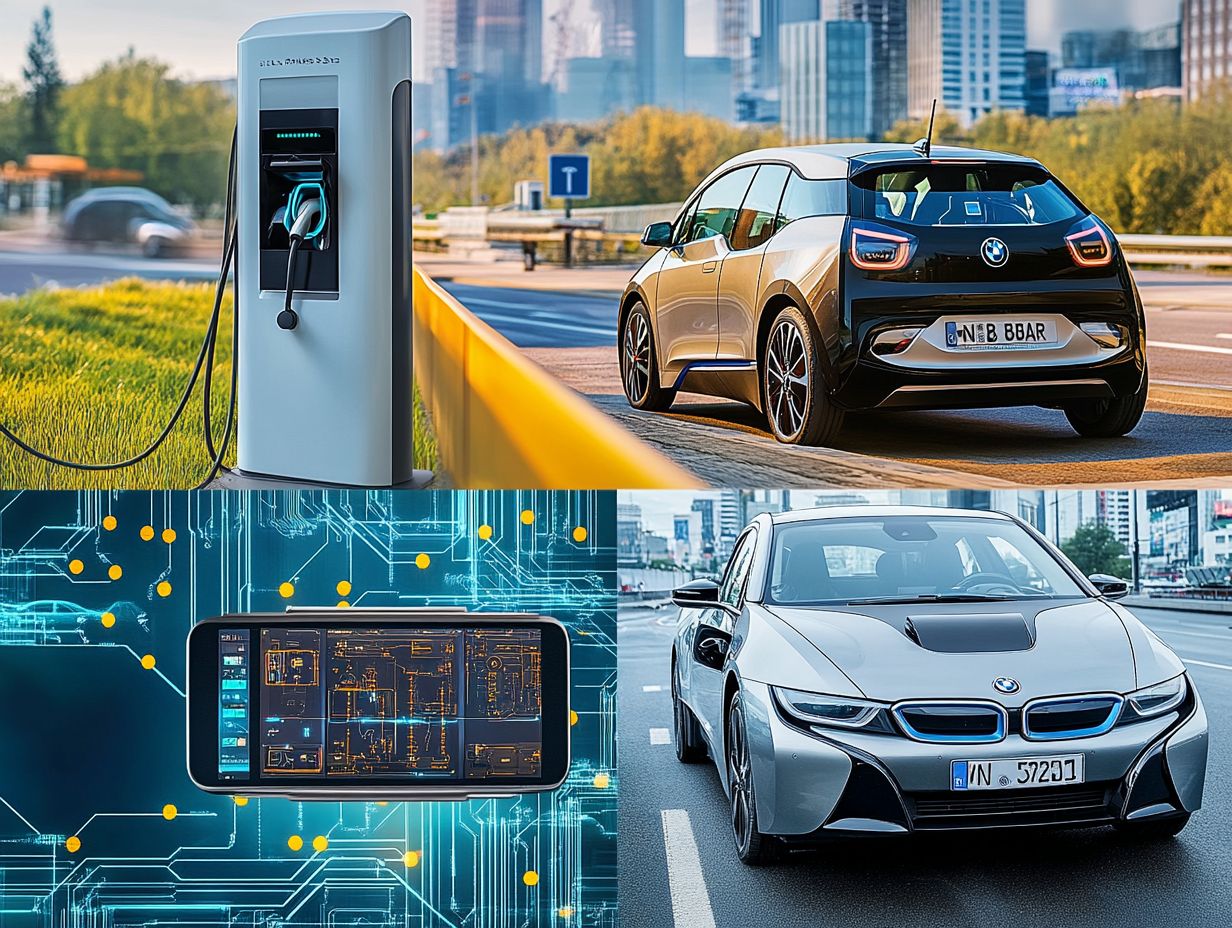
The 5 key innovations in electric vehicle technology include battery technology, charging infrastructure, regenerative braking, lightweight materials, and autonomous driving.
Curious about how battery technology has improved in electric vehicles?
Battery technology has improved significantly with the development of lithium-ion batteries. They offer longer range, faster charging times, and improved energy efficiency.
Curious about the significance of charging infrastructure for electric vehicles?
Charging infrastructure is crucial for the widespread adoption of electric vehicles. It provides convenient and accessible charging options for drivers, reducing range anxiety and promoting usage.
Curious about regenerative braking in electric vehicles?
Regenerative braking is a system that captures kinetic energy during braking and uses it to recharge the battery. This increases the overall energy efficiency of the vehicle.
Curious about how lightweight materials benefit electric vehicles?
Lightweight materials, such as carbon fiber and aluminum, reduce the weight of electric vehicles. This makes them more energy-efficient and increases their range, while also improving overall performance and handling.
Curious about the role of autonomous driving in the future of electric vehicles?
Autonomous driving technology has the potential to revolutionize the electric vehicle industry. It will provide safer and more efficient transportation options and reduce the need for personal vehicle ownership.

